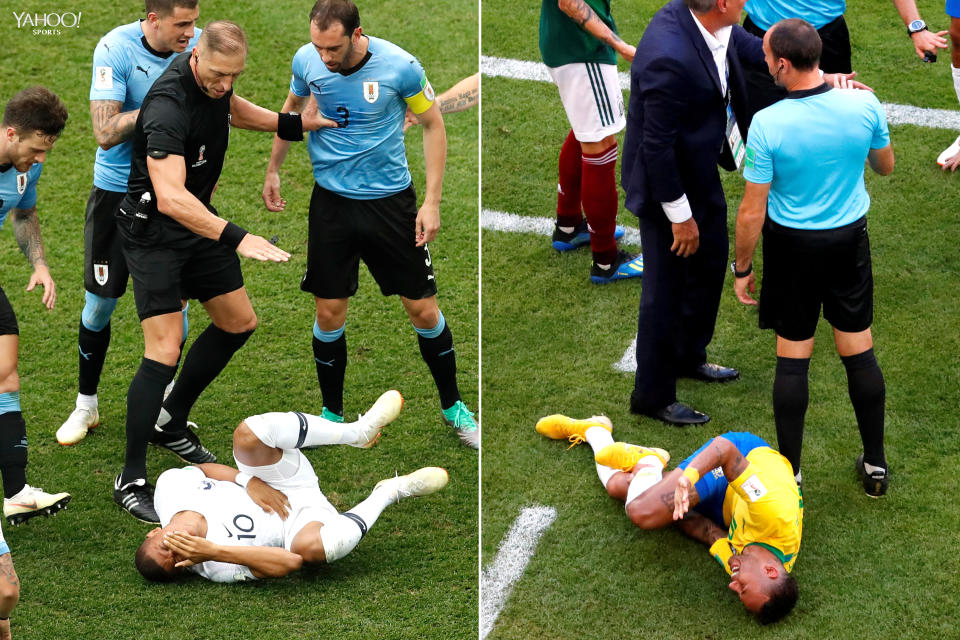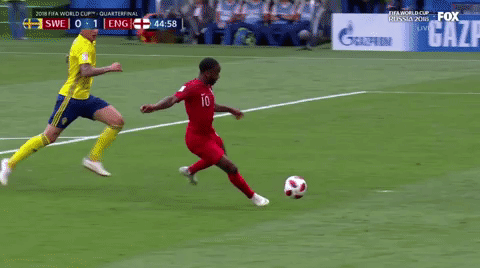Why soccer players flop, and why divers themselves aren't the only ones to blame
There are few things in soccer as incendiary as the flop, and few times when discussion of the sport’s most hated tactic reach a more feverish pitch than at the World Cup. Every four years, players throw themselves to the ground, the entire planet grabs its pitchforks, and rage swirls. The 2018 pattern has been no different.
In fact, the fury this time around, primarily directed at Neymar, feels as intense as ever. The Brazilian star’s antics have given rise to a worldwide social media phenomenon. They’ve rankled pundits and defenders and fans alike.

Some criticism comes from the same folks who’d label all soccer players “pansies” or “soft.” Their opinions are irrelevant. But the 2018 World Cup has seemingly exacerbated the feeling that flopping is a major stain on the sport. And frankly, if thousands of fans are of that opinion, case closed. It is.
But the entire discussion has been annoyingly bereft of nuance. There are reasons players dive. There are complexities. There are situations in which flopping can and should be ridiculed, but others in which it’s both understandable and acceptable.
There are different types of flops
No two incidents are the same. We can roughly divide them into four categories that will aid understanding.
First, there is a dive, which is an attempt, in the absence of contact, to con the referee into thinking there was contact. Some would argue it’s part of the game, like a baseball batter reacting to a high-and-tight pitch as if he were hit by it. But diving is generally not accepted, widely condemned, and punishable by yellow card. It will theoretically be expunged from the game by VAR.
Second, there is a flop, which occurs in the presence of innocuous contact – not contact that warrants a foul, not contact that would cause a player to naturally react in the manner he or she does. Flops often occur away from the ball, and are often inexcusable:

Third, there is what we’ll call fabrication, which is the creation of contact by an attacking player – for example, the dragging of a leg in an unnatural position – to essentially frame a defender. It comes with grey areas. Most often, it’s simply a no-call – no foul, no card for simulation.
And finally, there is embellishment, which occurs after a legitimate foul, when a player exaggerates impact or pain in an effort to draw a whistle or card. This is the most common type of theatric. It’s what Neymar has been mocked for.
Fair or foul? pic.twitter.com/XMJUEzEctz
— FOX Soccer (@FOXSoccer) July 2, 2018
And it’s what we’re about to discuss.
Why players embellish, Part 1: A refereeing problem
So why do players tumble to the ground rather than stay on their feet? Oftentimes the answer is pretty simple: Because they’re not going to get a foul if they choose honorably.
Defenders impede attackers in all kinds of unlawful ways: a forearm to the chest, a tug on the shoulder, a graze of the shin. Most of them don’t send the attacker crashing to the turf. The ones that don’t often aren’t whistled, even if they’re no less fouls than the ones that do.
Here’s an imperfect example from the World Cup quarterfinals. England’s Raheem Sterling was in on goal, and tried to dribble around Sweden keeper Robin Olsen. Pretend, for a second, that Olsen doesn’t touch the ball. He clearly does make contact with Sterling’s foot, throws him off balance, and hinders him. It’s a foul. If Sterling goes down, it’s a penalty.

But because he stays up, the ref likely would have ignored the contact. Sterling, by doing what fans want players to do, would have cost his team a probable goal from the penalty spot.
Embellishment, at its core, is a refereeing problem. Refs take various informative cues from players in deciding – often via educated guess – whether a play was fair or foul. Unfortunately, one of those cues is an attacking player’s reaction. Refs, therefore, have been conditioned to reward embellishment and punish righteousness. Their errors incentivize players to dive or embellish. When a forward doesn’t, he or she is hurting his or her team.
Why players embellish, Part 2: Fighting sin with sin
The other side of embellishment is that it’s simply a way to combat another soccer sin: injurious tactical fouling.
Both diving and fouling are carefully curated strategies. Both violate the laws of the game. Both mar it. The difference is that one takes the beauty out it, while the other supposedly takes the masculinity out of it, or something like that. And a lot of fans either seem to have decided the latter is worse, or haven’t considered the connection between the two.
It’s no coincidence that Neymar is both soccer’s most notorious flopper and its most fouled player – by wide margins. He’s the second-best on-ball player in the world, so opponents who can’t stop him simply beat the brilliance out of him. Switzerland fouled him 10 times – and injured him – in Brazil’s World Cup opener.
The way to curb tactical fouling is to punish it with yellow cards and eventually reds. Far too many refs, however, do so with excessive (and harmful) lenience. Their tolerance enables the beatings. And it forces players like Neymar to exaggerate contact or pain. If he doesn’t, transgressors escape unscathed. If an opponent purposefully steps on his ankle and he doesn’t react with an animated squirm and a howl, the ref doesn’t notice, and ankle-crunching effectively becomes legal.
This isn’t to say Neymar or a host of other embellishers are saints. They often cross the line into flopping or diving. When they do, they should be criticized. What Kylian Mbappe did Friday was pitiful. But when Neymar rolls along the sideline with a gymnast’s grace?

He’s drawing the defender a yellow card. In the process, he’s preempting another hard foul from the same player, and ensuring that later in the match, he’ll be free to inject the game with the dazzling skill that draws us to it. Consider that next time you brandish your pitchfork.
– – – – – – –
Henry Bushnell covers global soccer for Yahoo Sports. Have a tip? Question? Comment? Email him at henrydbushnell@gmail.com, or follow him on Twitter @HenryBushnell, and on Facebook.

 Yahoo Sports
Yahoo Sports 

